SUMMARY
This is AI generated summarization, which may have errors. For context, always refer to the full article.
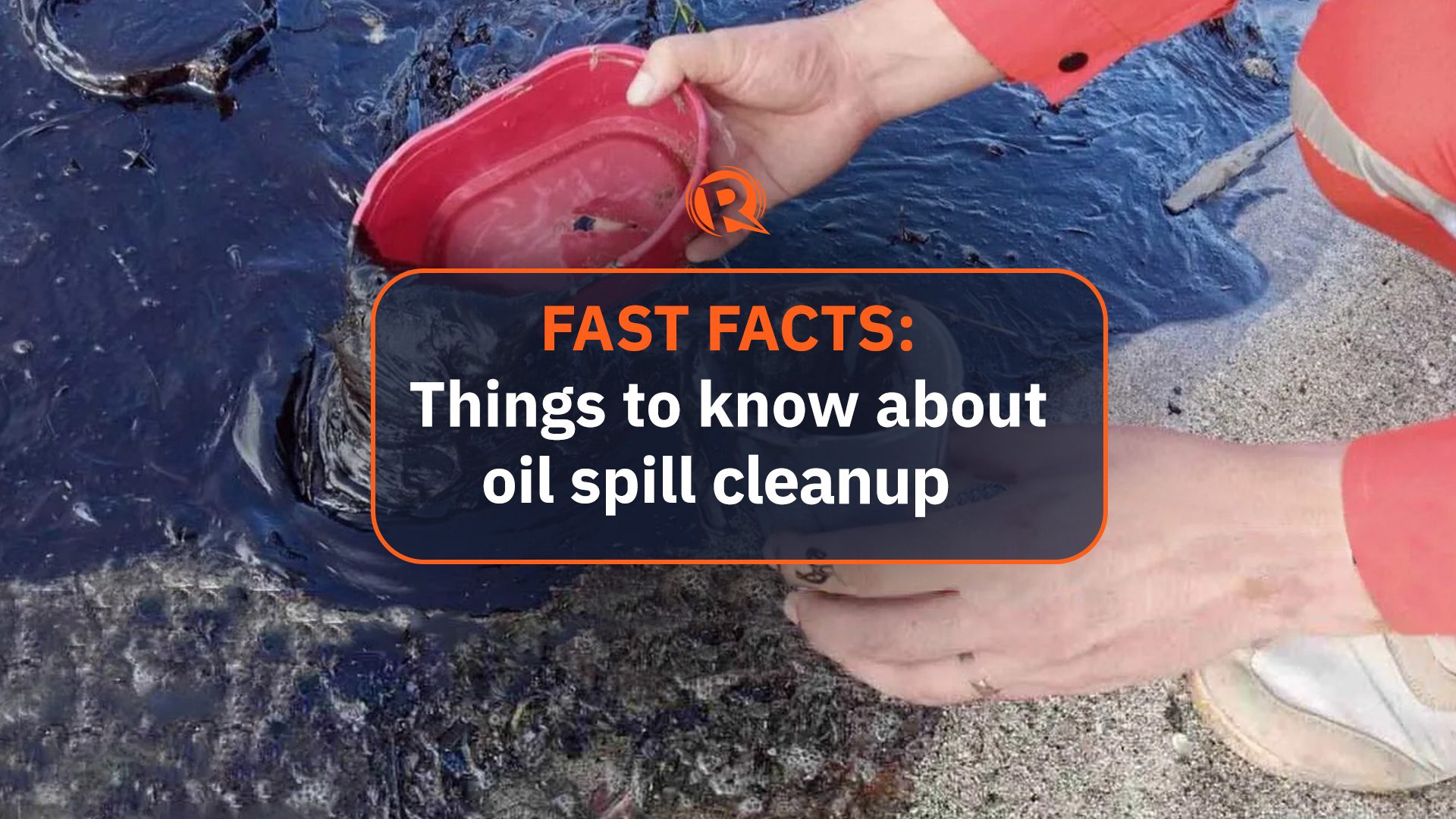
MANILA, Philippines – The Philippine Coast Guard (PCG) showed in a Facebook post on Thursday, March 2, that it was now applying oil dispersants in the area affected by the oil spill from MT Princess Empress that capsized near the coast of Naujan, Oriental Mindoro.
Oil dispersants are commonly used to clean up oil spills, but there are other methods that can be used.
According to the United Nations Environment Programme’s (UNEP) website, the method used to clean up an oil spill depends on several factors – distance of the spill to shore, weather conditions, type of oil, shoreline type, and environmental sensitivity.
Here’s useful information on the common methods used to clean up these spills, the gears an oil spill responder should have, and what cleanup volunteers and residents affected should keep in mind.
Cleanup methods
The United States’ National Oceanic and Atmospheric Administration (NOAA) said on its website that there are three main methods to clean up an oil spill: skimming, in situ burning, and chemical dispersants.
Skimming is a process where the layer of oil floating on top of the sea surface is removed. This is usually done before the oil reaches the shoreline and other sensitive areas along a coast.
Here, devices like disks and drums are used. The oil sticks to the surface of these devices which are then transferred to a collection tank.
Before skimming, a device called a boom is deployed to keep the spill contained.
Controlled burning of the oil at the site of a spill is done via what’s called in situ burning. “In situ” is a Latin term meaning “on-site,” referring to the method of burning oil on the spot.
Just like in skimming, a boom is deployed first before in situ burning to make sure the fire is contained and the oil layer is thick enough to burn. According to an oil spill response manual published by the NOAA, the oil layer will burn if it’s thicker than 1-2 millimeters.
Using chemical dispersants like what the PCG did is also a common method to clean up oil spills.
According to oilspillprevention.org and the NOAA, dispersants are chemical agents with similar ingredients to soap and detergents that break down oil molecules into smaller droplets, making them easier to mix with water. Microbes can also eat smaller droplets of oil, turning them into less harmful compounds.
Chemical dispersants are ideally used in daylight under mild wind and moderate sea conditions. This process is also never done close to shore.
However, dispersants do not reduce the amount of oil. They only break it down so that less of the oil stays on the water’s surface. Instead of affecting the wildlife that comes into contact with the sea’s surface, dispersants shift an oil spill’s impact to marine life living beneath the surface.
When the oil spill reaches the shoreline, the UNEP website said manual cleanup is needed and is usually deployed. The residents of the municipality of Pola, Oriental Mindoro, already started doing this using water containers, paint buckets, pails, and coconut husks.
Cleaning up oil spills in PH
The Philippines is no stranger to catastrophic oil spills that not only affect a significant portion of the human population but also devastate marine biodiversity and ecosystems.
The country faced its worst oil spill incident when MT Solar I sank in the vicinity of Guimaras Island on August 11, 2006, causing 2,162,230 liters of bunker oil to spill into the gulf, traveling up through the Iloilo Strait.
To control the spill, the government created Task Force Guimaras and got international assistance from the Coast Guards of the US and Japan, and the government of Indonesia. Shoreline cleanup, pressure flushing, deployment of an oil spill boom were applied, along with vessel and aerial application of an oil spill dispersant.
To further help contain the oil, the government also used indigenous materials and ordered to put cast-off clippings of human hair from volunteers and about 500 hair salons in Metro Manila. These were placed in permeable sacks for use as improvised booms.
After the 2006 Guimaras oil spill, the PCG revised the National Oil Spill Contingency Plan (NOSCOP) to provide a coordinated and integrated response mechanism to effectively manage all spill response activities.
The PCG, through the NOSCOP, adopted a tiered response to effectively address oil spill situations at various levels. Reponse strategies depend on the magnitude of the oil spill, the proximity to a response center, and the number of resources needed to get an effective response to the situation.
- Tier I: A response for an oil spill that is generally small in magnitude and only affects a local area. This may be an oil spill situation by the individual operator or spiller, with no need to involve external resources. Examples include spills associated with the transfer of fuel or bunker at a terminal, and smaller harbor spills.
- Tier II: For oil spills that are possibly larger in magnitude. This may be associated with, but is not limited to, shipping incidents in ports/harbors or coastal waters, including pipeline or tank failures, nearshore explorations, or production operations. A Tier II response may require a government response.
- Tier III: Also known as a national level response to oil spills on a larger scale, with the possibility of causing major impacts and affecting a large area. This may be associated with large tanker incidents or offshore blowouts. This response usually calls for a country’s full resources in responding to an oil spill and may also require a call for international assistance.
Gearing up
An oil spill cleanup requires the wearing of personal protective equipment (PPE) to prevent crude oil from contacting the skin. Direct contact with crude oil can cause skin irritation and inflammation, according to the United States Occupational Safety and Health Administration (OSHA) website.
The OSHA website and a United States National Institute of Health (NIH) guide for basic safety and health precautions for people doing oil spill cleanup work says that the following PPE should be worn:
- Disposable gloves
- Protective clothing
- Protective pants
- Life jackets
- Boots
The NIH guide also recommends that people bring a respirator when doing oil spill cleanup work and suggests taping boots to pants to form a seal.
The OSHA also adds that the use of sunscreen, shaded safety glasses, and wide-brimmed hats are recommended in hot environments.
Dos and don’ts
People living in areas affected by an oil spill and those who will volunteer to help in the cleanup have similar things to remember. The first thing is to avoid having direct contact with spilled oil at all costs because it can have harmful effects on the skin.
Rappler also has a few dos and don’ts shared by the PCG for people when they encounter an oil spill.
The US NIH’s guide also contains a few reminders:
- Be careful about slips, trips, and falls when walking over and handling debris covered with water and oil. Watch for oil-slick rocks.
- Do not stand or come in contact with unknown liquids or substances.
- Do not handle unmarked, unlabeled, or damaged containers – report these to your supervisor.
The NIH’s guide also reminds the public to properly decontaminate the PPE worn after helping in oil spill cleanup work. Since oil is combustible, smoking should be avoided in a cleanup area. – Rappler.com
Add a comment
How does this make you feel?
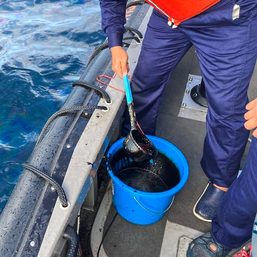





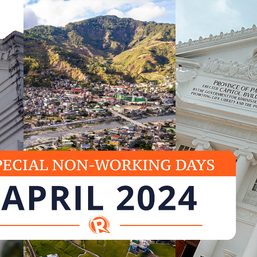
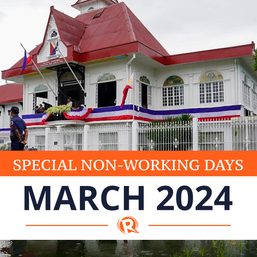
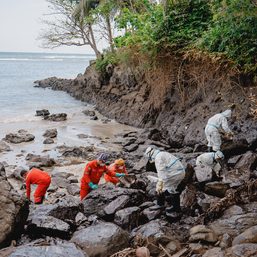
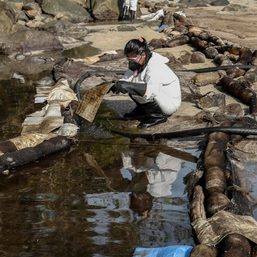
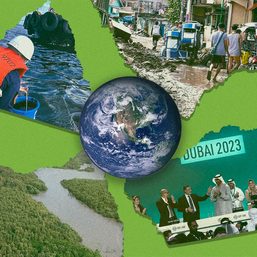






There are no comments yet. Add your comment to start the conversation.